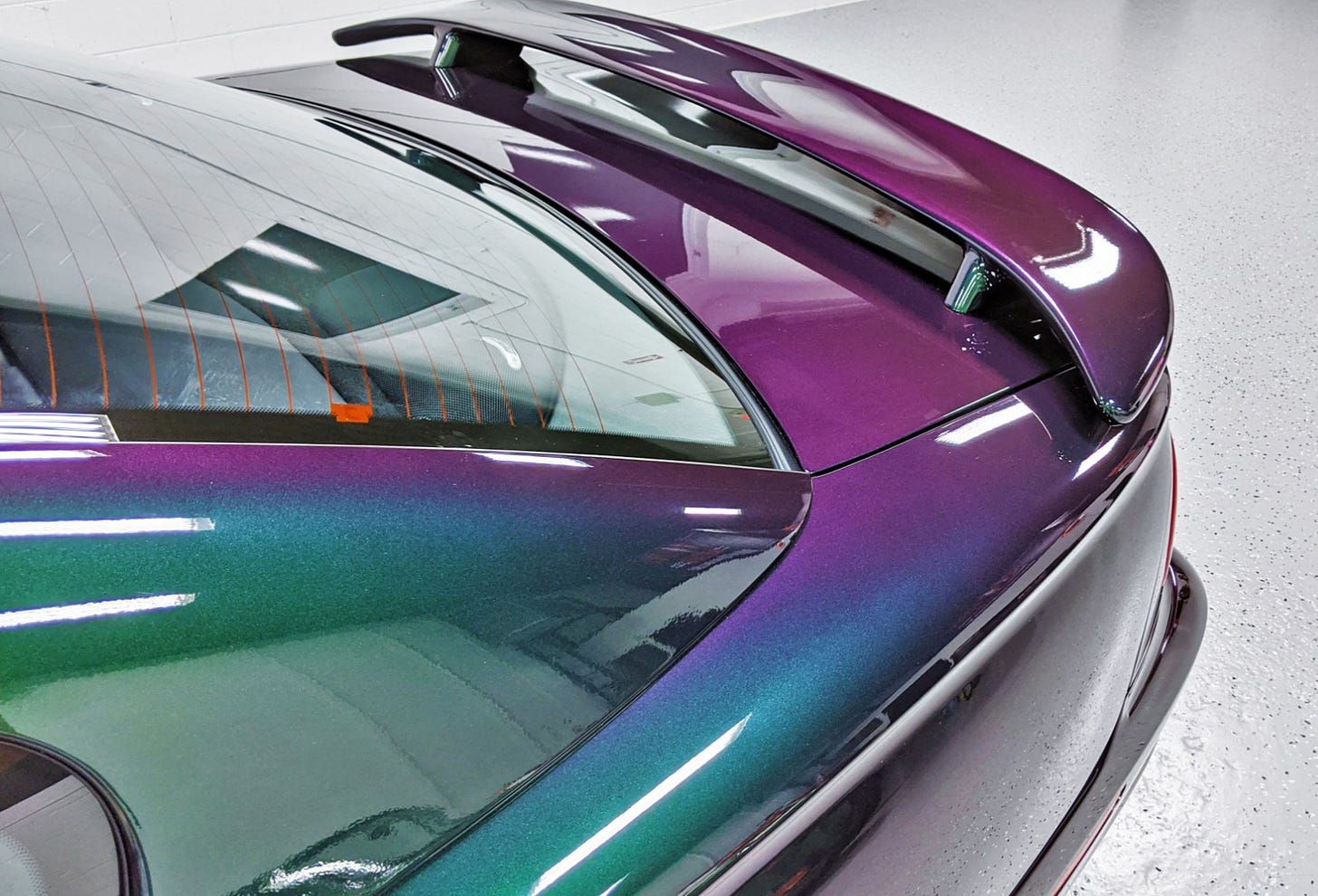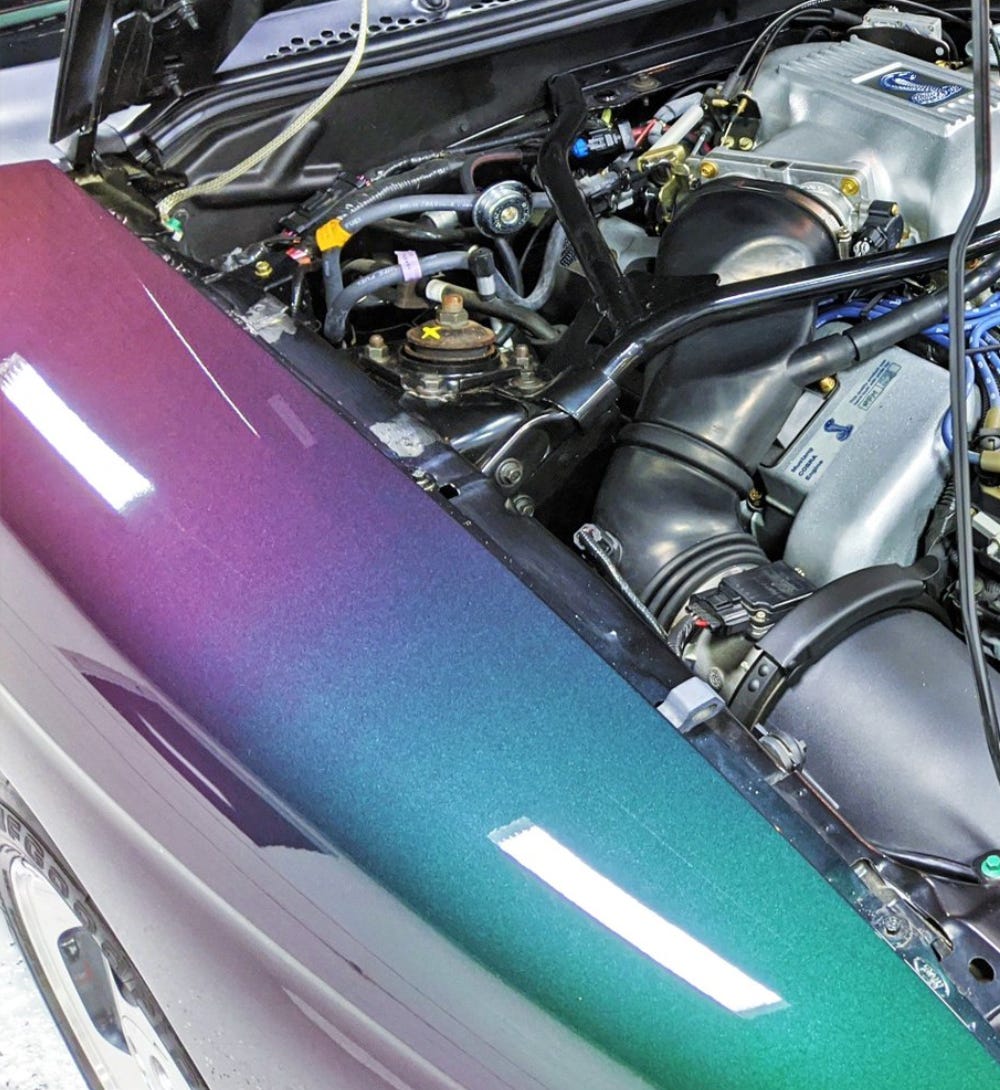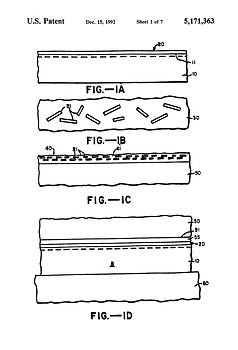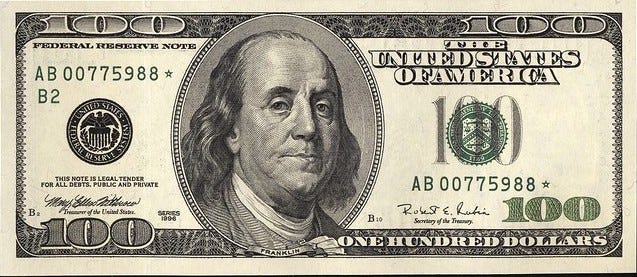Ryan McManus (RMM) is a product designer at Ford and a longstanding friend of WITI. He has previously written about the end of spare parts, the simple elegance of SecuriCode, and how to start your own town. He has never owned a gray car. Well, one—but he was young.

Ryan here. If you were running a body shop in the mid-1990s, there was one car that might have given you pause if it showed up on the back of a truck for a respray: The 1996 Ford Mustang SVT Cobra, in a color called Mystic. First, the car would have looked purple, black, green, or even gold, depending on how the light hit it—meaning you had to be very precise in technique to get a perfect blending. Second, the paint itself was 40x more expensive than any other color you were spraying, meaning any waste or screw-ups would be deleterious to your business. Oh, and third: you would be watched the entire time by either a Ford employee, a BASF employee, an officer from the U.S. Treasury, or even the Secret Service.
Why is this interesting?
Back in the early 1990s, BASF had patented a new pigment for inks and paints, which used a novel patented technology: Prism Platelets. Developed by a company called Flex Systems, these tiny lenses were suspended in a clear liquid pigment that could be sprayed or printed over existing colors. As the pigment dried, the tiny prisms would harden and line up to create a holographic foil that coated the base paint.
The effect on light was like nothing else in the market at the time. While automakers and customizers had been playing with metallic flake and pearlescent paints for decades, nothing approaching a true holographic effect had been perfected, and certainly not at scale. BASF knew they were on to something special, so they decided to shop the pigment around. One of the doors they knocked on was Ford Motor Co. (disclaimer: my employer), which was interested in the new color technology for use on their storied Mustang brand. Ford’s Special Vehicle Team (SVT) had been cooking up a new Mustang Cobra, the highest-powered variant at the time, and this new pigment would ensure the car turned heads even when standing still.
But Ford needed some convincing, so they shipped BASF 2 black Mustang GTs to be painted in the new color, dubbed “Mystic”. After seeing the test cars, Ford ordered enough pigment to paint 2000 of the 7500 1996 SVT Cobras. The option cost $1,152.

When you see a Mystic Cobra for the first time, the color that your brain sees depends completely on both the lightning conditions and your angle to the car. There is actually no color in the pigment itself—it is simply millions of tiny prisms sitting atop a gloss black basecoat. But because your eye sees color by the wavelengths reflected back at it, the prisms break the reflected light into different wavelengths, hence different colors (this also makes it extremely difficult to photograph accurately).
But what about the government oversight? See, Ford wasn’t the first door BASF knocked on with their revolutionary pigment. They first approached the U.S. Treasury Department about using the Prism Platelets in their printing process to create unique holographic inks on currency. The Treasury, always looking for a foothold against counterfeiters and in the midst of redesigning the $100 bill, began using the BASF pigment to create holographic “100”s that could not be duplicated by anybody else.
Unless, of course, they could get their hands on this elusive prismatic pigment—the same one Ford was now providing to body shops who needed to do paint repairs to the SVT Cobras. You couldn’t buy Mystic in a store—Ford maintained a repository of the paint specifically for body shops to use, and any resprays needed to be monitored by either Ford or BASF (and yes, even reportedly the Secret Service on some occasions) and all unused pigment needed to be bagged up and returned. The dried pigment wasn’t a risk, but any liquid leftover could have the platelets extracted and used in counterfeiting.
Sadly, Mystic vanished as quickly as it appeared. There were plans for a new, gold version for 2000, but a costly recall canceled the program. And while color-shifting paints and wraps would reappear on Mustangs and other cars, none would ever use that costly, secretive pigment again. (RMM)
WITI Classifieds:
We are experimenting with running some weekly classifieds in WITI. If you’re interested in running an ad, you can purchase one through this form. If you buy this week, we’ll throw an extra week in for free on any ad. If you have any questions, don’t hesitate to drop a line.
My Next Electric is a hella-fun online crash course about how to move from gas to electric cars and stoves. Sign up for a class
Noah here. I've got a new newsletter about brands and AI called BrXnd Dispatch. If you're in marketing, creative, or just interested in understanding what's up with AI, check it out. Subscribe to BrXnd Dispatch
—
Thanks for reading,
Noah (NRB) & Colin (CJN) & Ryan (RMM)
—
Why is this interesting? is a daily email from Noah Brier & Colin Nagy (and friends!) about interesting things. If you’ve enjoyed this edition, please consider forwarding it to a friend. If you’re reading it for the first time, consider subscribing.







Great story !!! woo